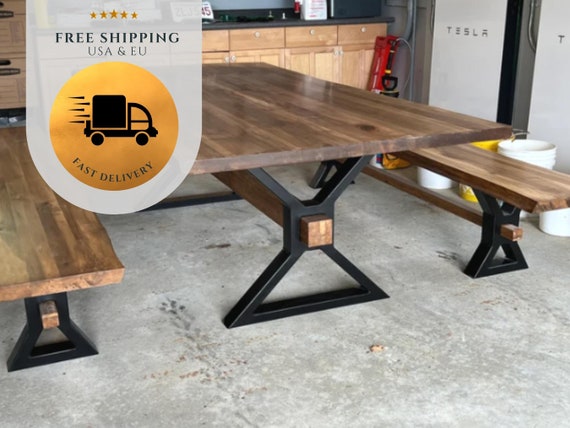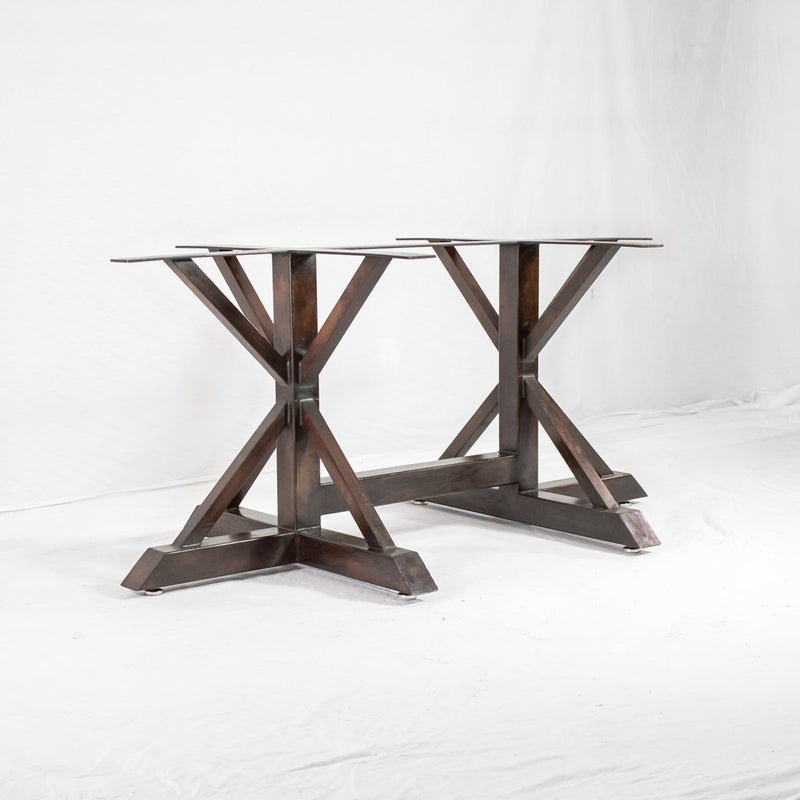From Conventional to Modern: Find the Suitable Dining-room Table Legs for Your Style
While classic designs such as cabriole and turned legs stimulate a feeling of classic class, contemporary styles like barrette and geometric choices present a possibility for striking aesthetic rate of interest. As you consider these aspects, the concern continues to be: how can you perfectly integrate these varied leg styles to produce an unified eating experience?
Recognizing Table Leg Styles
The range of dining room table leg styles can dramatically affect both the appearances and capability of the space. Each leg design adds distinct visual components and practical attributes, accommodating varied style choices and usage demands. Comprehending these designs is critical for choosing the ideal table that straightens with your general interior decoration vision.
For circumstances, conical legs provide a clean, classic appearance that can enhance a space's sophistication, while pedestal bases supply security and take full advantage of legroom, making them ideal for smaller rooms. Barrette legs, a characteristic of mid-century contemporary design, present an industrial panache, allowing for a ventilated, open feeling. Likewise, trestle legs stimulate rustic charm, giving durable assistance and a sense of eternity.
Wood legs can bring heat and appearance, whereas metal choices commonly share a smooth, modern ambiance. Eventually, comprehending table leg designs is essential for producing a natural dining location that reflects individual design while guaranteeing practicality and comfort.
Traditional Table Leg Options
When choosing dining-room table legs, conventional choices usually embody timeless style and craftsmanship. These styles mirror an abundant heritage and a commitment to high quality, making them optimal for those who value traditional looks.
One of the most renowned traditional leg styles is the cabriole leg, defined by its graceful curved shape. This style frequently includes decorative carvings and is most commonly located in Queen Anne and Chippendale furniture. An additional preferred choice is the transformed leg, which boasts a collection of smooth, rounded forms that provide a classic appearance while maintaining stability.
Moreover, the straight leg, while straightforward, supplies a basic and strong framework that can mix seamlessly with a selection of tabletop styles. For those attracted to ornate describing, claw-and-ball feet legs stimulate a feeling of majesty and can act as a magnificent focal factor in any dining room.
Lastly, stand bases, although not purely legs, give an alternate traditional choice that permits for adequate legroom and can be beautifully sculpted. Each of these traditional leg designs adds to the total setting of a dining-room, weding function with aesthetic charm.

Modern Table Leg Layouts
Modern table leg designs supply a diverse series of styles that highlight clean lines and innovative products. These designs commonly prioritize functionality while functioning as striking centerpieces within a dining space. Minimal visual appeals are widespread, with legs crafted from materials such as metal, glass, and engineered timber, which add to a ventilated and contemporary feel.
One prominent style is the hairpin leg, characterized by its slender, tapered structure that provides stability without frustrating the tabletop (dining room table legs). This style is frequently found in mid-century modern furniture and can effortlessly enhance various table shapes. One more pattern is using geometric forms, where legs may handle angular or unbalanced forms, including aesthetic rate of interest and a touch of virtuosity

Mixing Styles for Distinct Rooms
Typically, house owners seek to produce distinct dining areas that reflect their individual style by mixing different layout aspects. This strategy enables the unification of varied aesthetics, causing an unified yet distinctive atmosphere. Combining a rustic wooden table with sleek, modern-day steel legs can produce an attractive contrast that raises the area's overall allure.
Furthermore, incorporating vintage table legs with contemporary tabletops can evoke a feeling of history while preserving a modern-day perceptiveness. Such combinations not only showcase private taste yet also encourage creativity, allowing property owners to curate an area that really feels both individual and welcoming.
Color plays a crucial duty in this mixing process; picking table legs that enhance or comparison with the existing color pattern can boost aesthetic passion. Whitewashed legs can soften the daring of a dark table surface area, creating a well balanced aesthetic.
Tips for Selecting the Right Legs
Selecting the right table legs is essential for achieving both performance and visual allure in your eating area. Begin click to find out more by taking into consideration the total style of your room. Standard setups gain from legs that feature intricate carvings or transformed styles, while contemporary spaces may call for streamlined, minimalist designs.
Following, examine the elevation and stability of the legs. dining room table legs. Common dining tables vary between 28 to 30 inches in elevation, so guarantee the legs complement this measurement for comfort. In addition, robust products, such as wood or metal, can improve stability and long life
Examine the leg shape also-- choices consist of right, tapered, or pedestal layouts. Straight legs supply a timeless appearance, while conical legs can include a touch of sophistication. Pedestal about his bases give sufficient legroom and are perfect for smaller rooms.
Conclusion
In recap, choosing the optimal eating space table legs requires cautious consideration of both modern-day and standard designs. By harmonizing leg design, elevation, and material with the overall decoration, a cohesive and welcoming ambience can be accomplished.
The variety of eating space table leg styles can dramatically influence both the aesthetic appeals and functionality of the area. Ultimately, recognizing table leg designs is vital for producing a pop over here natural dining location that mirrors personal design while making sure functionality and comfort.One of the most renowned typical leg designs is the cabriole leg, identified by its elegant bent shape. Straight legs offer a classic appearance, while tapered legs can add a touch of beauty.In summary, choosing the perfect dining room table legs requires cautious consideration of both typical and modern-day styles.